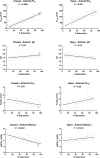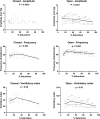Spiny dogfish, Squalus suckleyi, shows a good tolerance for hypoxia but need long recovery times
- PMID: 39139733
- PMCID: PMC11320369
- DOI: 10.1093/conphys/coae054
Spiny dogfish, Squalus suckleyi, shows a good tolerance for hypoxia but need long recovery times
Abstract
Pacific spiny dogfish, Squalus suckleyi, move to shallow coastal waters during critical reproductive life stages and are thus at risk of encountering hypoxic events which occur more frequently in these areas. For effective conservation management, we need to fully understand the consequences of hypoxia on marine key species such as elasmobranchs. Because of their benthic life style, we hypothesized that S. suckleyi are hypoxia tolerant and able to efficiently regulate oxygen consumption, and that anaerobic metabolism is supported by a broad range of metabolites including ketones, fatty acids and amino acids. Therefore, we studied oxygen consumption rates, ventilation frequency and amplitude, blood gasses, acid-base regulation, and changes in plasma and tissue metabolites during progressive hypoxia. Our results show that critical oxygen levels (P crit) where oxyregulation is lost were indeed low (18.1% air saturation or 28.5 Torr at 13°C). However, many dogfish behaved as oxyconformers rather than oxyregulators. Arterial blood PO2 levels mostly decreased linearly with decreasing environmental PO2. Blood gases and acid-base status were dependent on open versus closed respirometry but in both set-ups ventilation frequency increased. Hypoxia below Pcrit resulted in an up-regulation of anaerobic glycolysis, as evidenced by increased lactate levels in all tissues except brain. Elasmobranchs typically rely on ketone bodies as oxidative substrates, and decreased concentrations of acetoacetate and β-hydroxybutyrate were observed in white muscle of hypoxic and/or recovering fish. Furthermore, reductions in isoleucine, glutamate, glutamine and other amino acids were observed. After 6 hours of normoxic recovery, changes persisted and only lactate returned to normal in most tissues. This emphasizes the importance of using suitable bioindicators adjusted to preferred metabolic pathways of the target species in conservation physiology. We conclude that Pacific spiny dogfish can tolerate severe transient hypoxic events, but recovery is slow and negative impacts can be expected when hypoxia persists.
Keywords: 1H-NMR spectroscopy; Abbreviations: PCA principal component analysis; TMAO trimethylamine oxide; amino acids; critical oxygen pressure; elasmobranch; hypoxia; ketones; metabolomics; recovery; shark.
© The Author(s) 2024. Published by Oxford University Press and the Society for Experimental Biology.
Conflict of interest statement
All authors declare no competing interests.
Figures




Similar articles
-
Energy and corticosteroid mobilization following an induced stress response in an elasmobranch fish, the North Pacific spiny dogfish (Squalus acanthias suckleyi).Gen Comp Endocrinol. 2021 Sep 1;310:113799. doi: 10.1016/j.ygcen.2021.113799. Epub 2021 May 5. Gen Comp Endocrinol. 2021. PMID: 33961877
-
Osmorespiratory compromise in an elasmobranch: oxygen consumption, ventilation and nitrogen metabolism during recovery from exhaustive exercise in dogfish sharks (Squalus suckleyi).J Comp Physiol B. 2022 Sep;192(5):647-657. doi: 10.1007/s00360-022-01447-4. Epub 2022 Jul 15. J Comp Physiol B. 2022. PMID: 35838789
-
Exercise and recovery metabolism in the Pacific spiny dogfish (Squalus acanthias).J Comp Physiol B. 2003 Aug;173(6):463-74. doi: 10.1007/s00360-003-0354-8. Epub 2003 Jul 8. J Comp Physiol B. 2003. PMID: 12851779
-
Hormonal effects on glucose and ketone metabolism in a perfused liver of an elasmobranch, the North Pacific spiny dogfish, Squalus suckleyi.Gen Comp Endocrinol. 2024 Jun 1;352:114514. doi: 10.1016/j.ygcen.2024.114514. Epub 2024 Apr 4. Gen Comp Endocrinol. 2024. PMID: 38582175 Review.
-
The chondrichthyan glucagon-like peptide 3 regulates hepatic ketone metabolism in the Pacific spiny dogfish Squalus suckleyi.Gen Comp Endocrinol. 2024 May 1;350:114470. doi: 10.1016/j.ygcen.2024.114470. Epub 2024 Feb 10. Gen Comp Endocrinol. 2024. PMID: 38346454 Review.
References
-
- Ballantyne JS (1997) Jaws: the inside story. The metabolism of elasmobranch fishes. Comp Biochem Physiol 118: 703–742. 10.1016/S0305-0491(97)00272-1. - DOI
-
- Ballantyne JS, Chamberlin ME, Singer TD (1992) Oxidative metabolism in thermogenic tissues of the swordfish and mako shark. J Exp Zool 261: 110–114. 10.1002/jez.1402610113. - DOI
LinkOut - more resources
Full Text Sources

